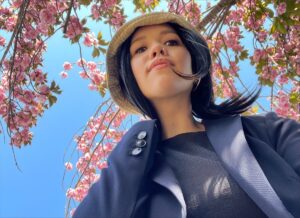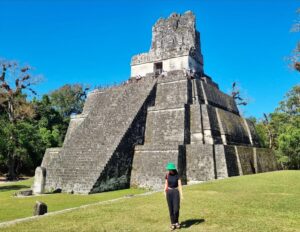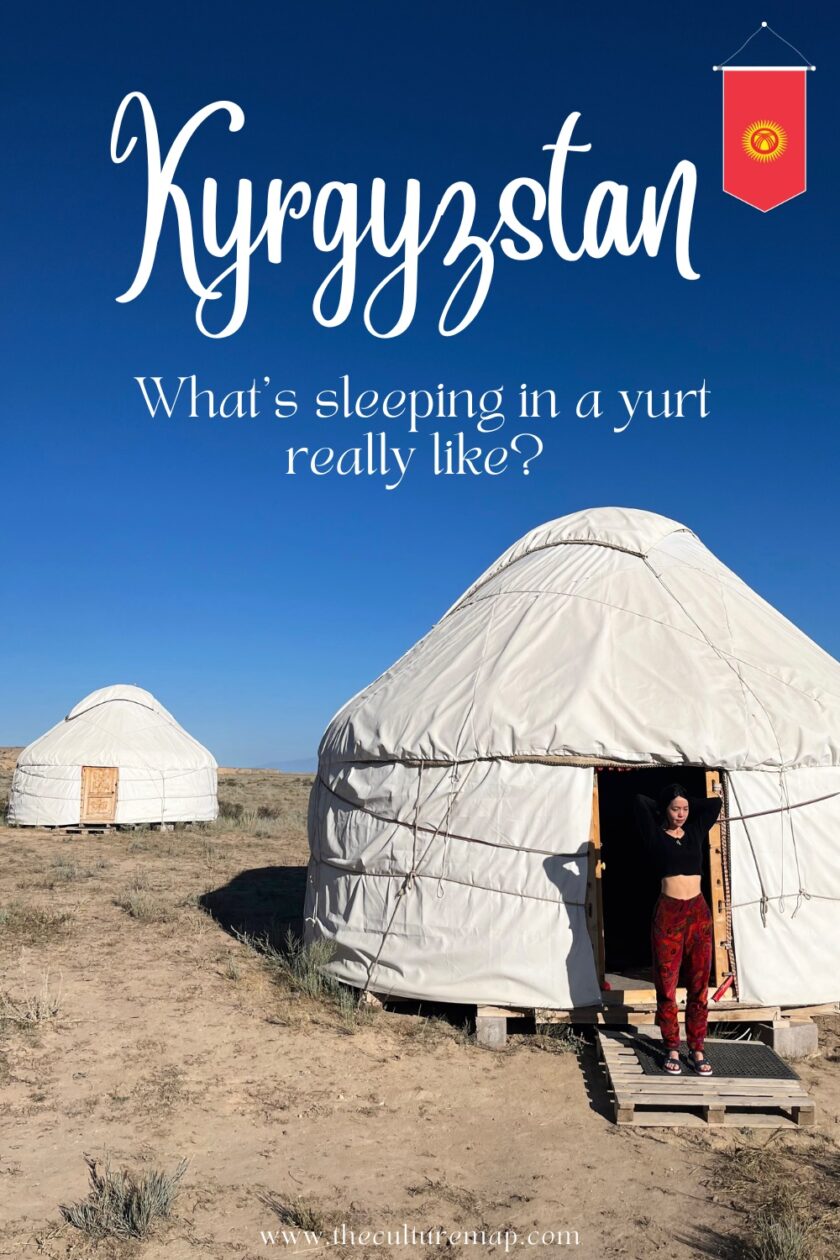
A Nomadic Way of Life
Portable, circular tents called yurts can be spotted all over Kyrgyzstan. They have been used by the Kyrgyz for thousands of years as a way of adapting to their nomadic lifestyle, allowing them to move easily and quickly with their herds of livestock in search of grazing grounds.
Today, yurts are still used by many Kyrgyz families as a symbol of their cultural heritage and as a way of connecting with their traditional way of life.
What’s more, any visitor arriving in Kyrgyzstan and wishing to be close to its renowned nature, can stay in those now operating as guesthouses. When planning my trip to Kyrgyzstan, I knew that I wanted to sleep in a yurt.
I was aching for an experience that would reinvigorate and take me out of the humdrum of daily life. I figured being closer to nature, in a country I had never visited but dreamt about, would be the remedy I needed.
How are yurts made?
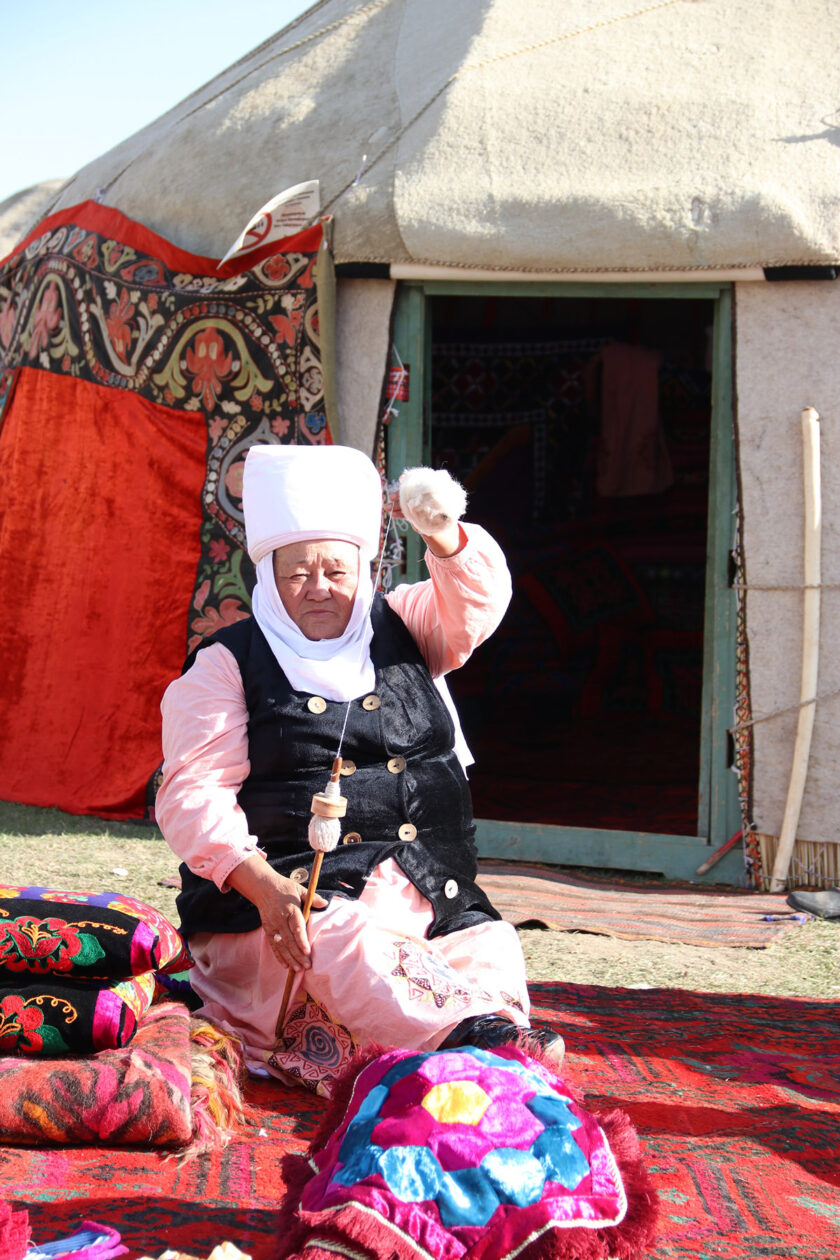
The construction of a yurt is an impressive feat of craftsmanship and engineering. In simplified terms, the frame of the yurt is made from flexible, light-weight branches or wooden poles that are bent into a circular shape and tied together with leather or rope.
The outer layer is made of thick, waterproof felt from the wool of sheep or yaks. The felt is layered and tightly compressed to provide insulation and warmth during the cold winter months.
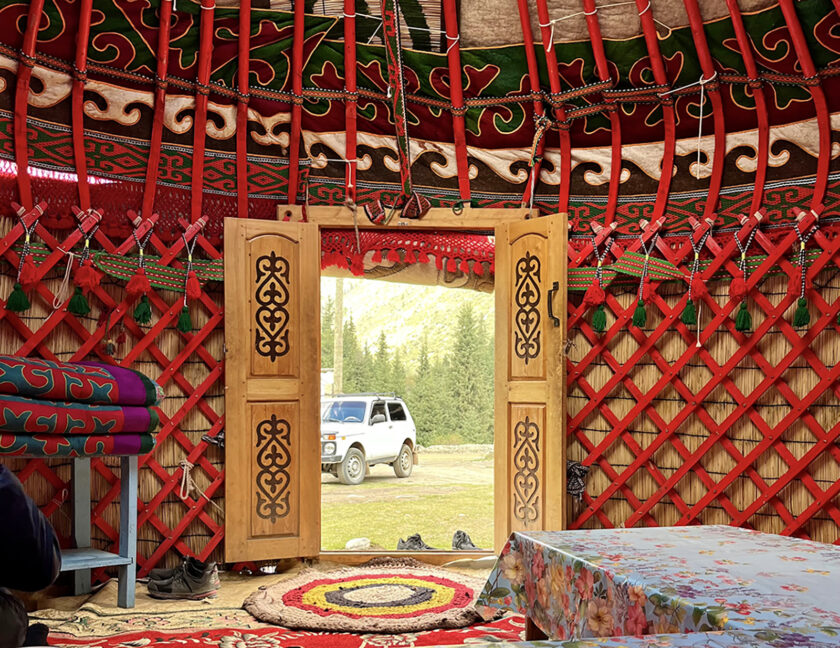
The final felt, which covers the smoke-hole, is known as the tu’n’lik. Long ropes go from the corners of the tu’n’lik to the ground. When they need to open the smoke hole they untie one of these ropes and push the felt back. In larger communal tents, it can be lifted back to allow sunlight to fill the room, acting as a window.
Instead of wallpaper or paint, interiors are decorated with colourful traditional textiles and carpets to provide a cosy and welcoming atmosphere for any residents and guests alike.
There is generally very little furniture in a yurt. The most common item is the sandıq. This is a carved or painted wooden chest used for storage. The bedding, thin quilted mats, with bright cotton covers is normally stored on top of the sandıq.
When your accommodation is the reason to travel
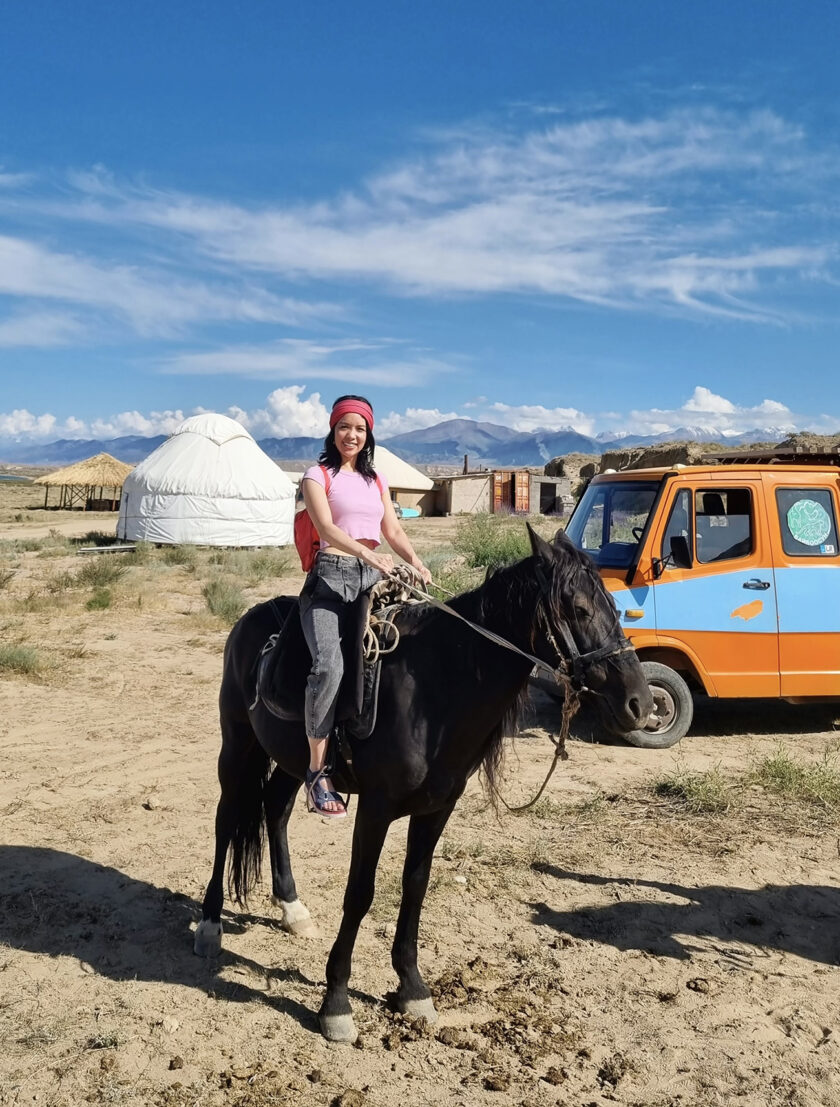
I don’t often write about accommodation because it’s not something I care much for when I travel. That’s why you’ll only find a few blog posts dedicated specifically to accommodation on this site.
They must be unique or offer something different to inspire me to write about them. Over the years, I’ve written about sleeping in an ice hotel in Norway, a tent cabin in Wadi Rum, and an eco-hut in Colombia. Now, I’m adding yurt accommodation in Kyrgyzstan to the list. I also still need to write about sleeping overnight in a Buddhist temple in Japan. I’ll get onto that soon.
None of these overnight experiences were as comfortable as the luxury of my own bed. If they were, I doubt they would’ve been half as memorable or exciting. Reflecting on these experiences, the feeling of reward wouldn’t be possible without an element of discomfort.
Feel Nomad Yurt Camp
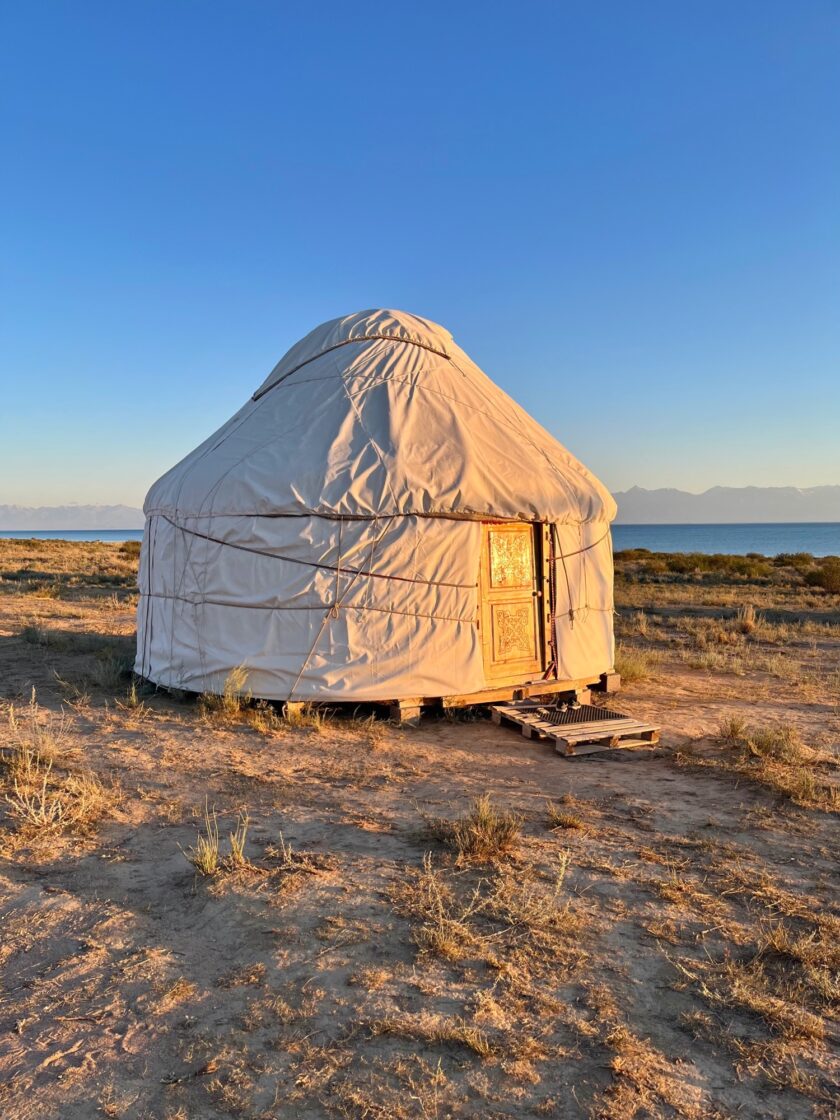
While travelling to Kyrgyzstan last year, I spent several days sleeping in yurt camps, that were set within some of the most breath-taking scenery anywhere in the world.
Particularly memorable, was Feel Nomad Yurt Camp located at the shores of Issyk Kul Lake. To reach the camp you had to travel through a huge canyon, 12-km from the nearest road in Ak-Say. Some Yurts just have mattresses on the floor, but this camp came equipped with a bed. Luxury!
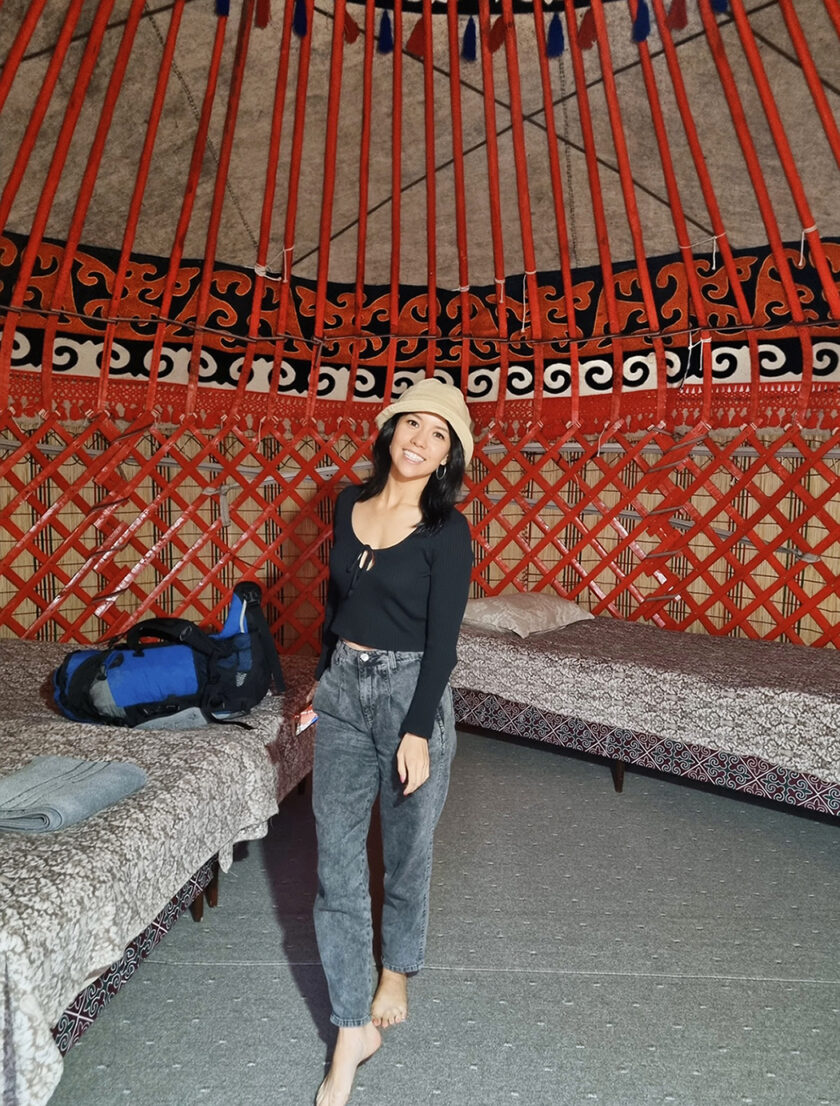
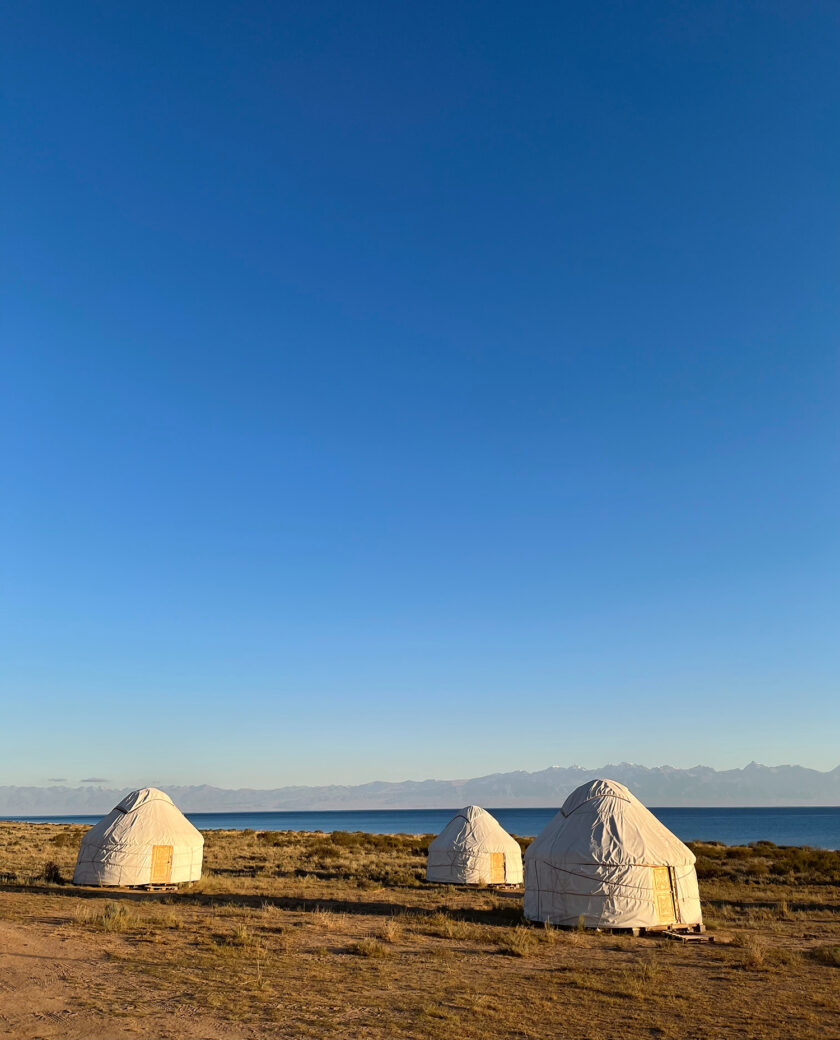
During our stay there was only one other person there. It’s a small camp, but still, we had the whole place to ourselves. We spend time kayaking and swimming in Issyk Kul, horse riding through the canyons and hiking up to see the sunset at Ak-Say Canyon, poetically named the ‘Canyon of Forgotten Rivers.’
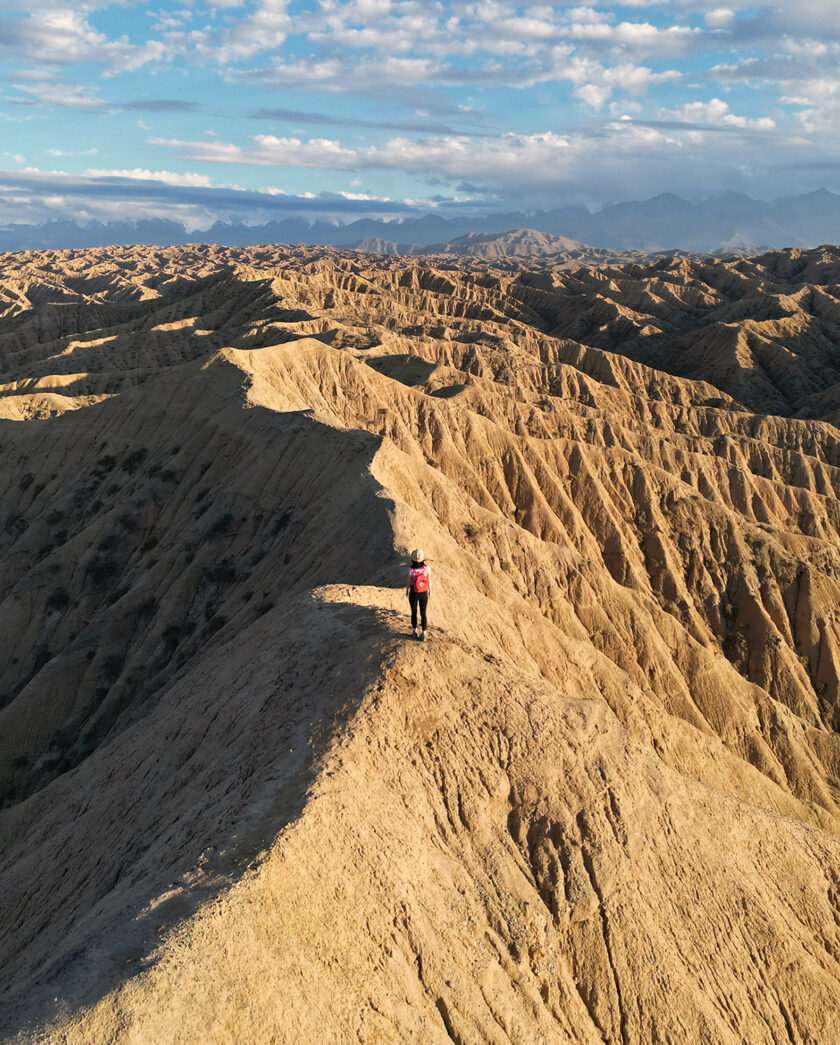
Surprisingly, I slept extremely well. But when I think about my sleeping habits in London maybe it’s not so surprising after all.
Without the noise and light from the big city, without the internet to scroll mindlessly through Reddit or Instagram, there was nothing left to do but sleep.
Every day I woke up feeling refreshed. This indicated that my body was actually receiving deep sleep, something I don’t get enough nor do enough about. My reset button had been firmly pressed and there was sufficent fuel in my tank to stave off the inevitable gloom on my return home once winter kicked in.
→ Book accommodation at Feel Nomad Yurt Camp
Not all yurts are built equal
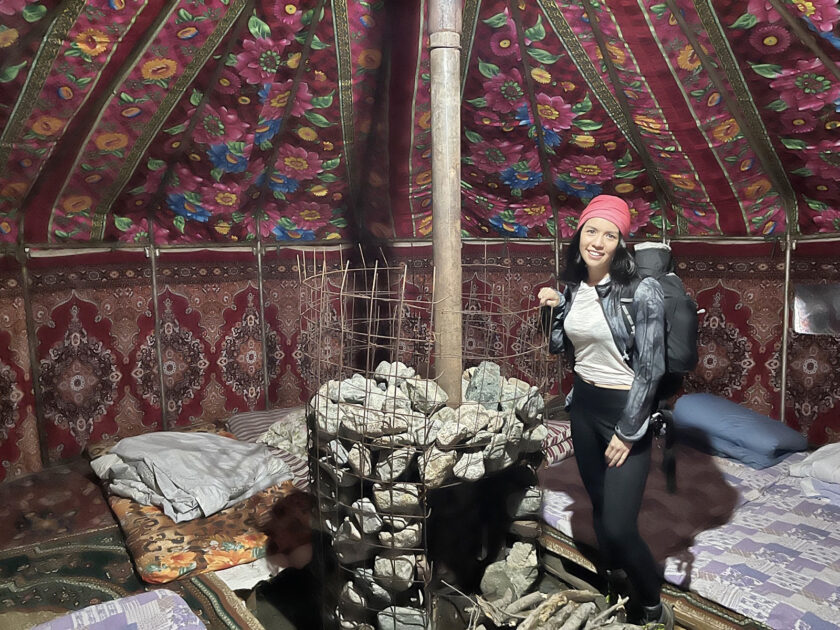
While Feel Nomad Yurt Camp offered the best of yurt accommodation, we also stayed in some rather uncomfortable ones too.
During my hike to Ala-Kul Lake, I stayed in a shared yurt with other hikers at Basecamp Karakol, and the whole night involved trying to fall asleep on a wooden pellet to the sound of swarming flies, humans snoring, dogs barking and the pounding hoofs of wild horses. I was extremely thankful for the stove fire which we managed to light after chopping up some tree branches – even if it didn’t last very long. The real perk of the fire was finding a place to warm up my socks!
All in all, I managed to squeeze in an hour of sleeping at best, but it was better than no sleep at all.
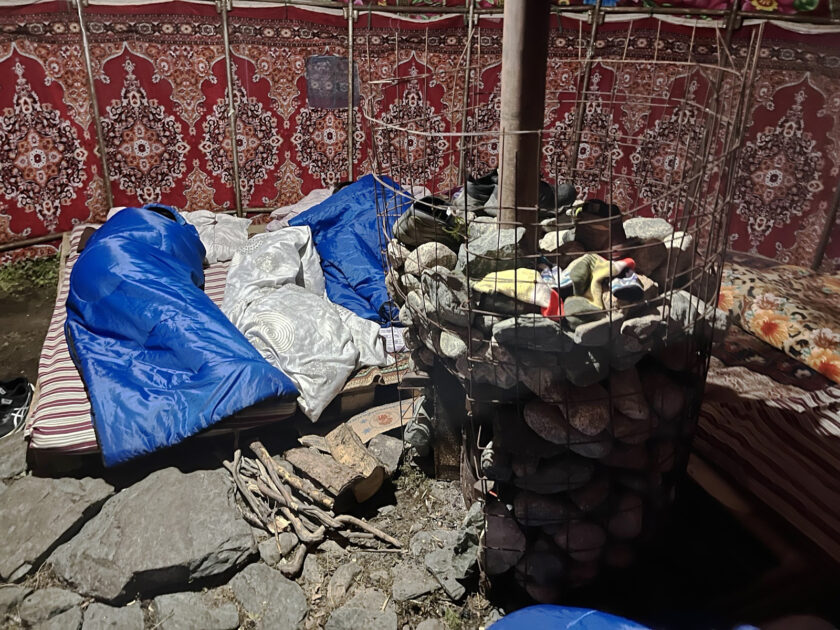
One thing to note about this particular camp, however, was the hospitality. It’s one of those places that you can rock up to and ask for shelter. We hadn’t booked in advance, but she still fed us and invited us in like we were two stray dogs sheltering from the storm. (Incidentally the weather was really bad).
Nomadic hospitality
The lady running Basecamp Karakol, I’m not sure how old she was exactly, but at an age where many her age would be retired in Europe, she was half-up a mountain looking after wayward hikers. She cooked up a storm in her make-shift kitchen and cosy dining room. I’m not sure I would have gotten through the hike without her cooking.
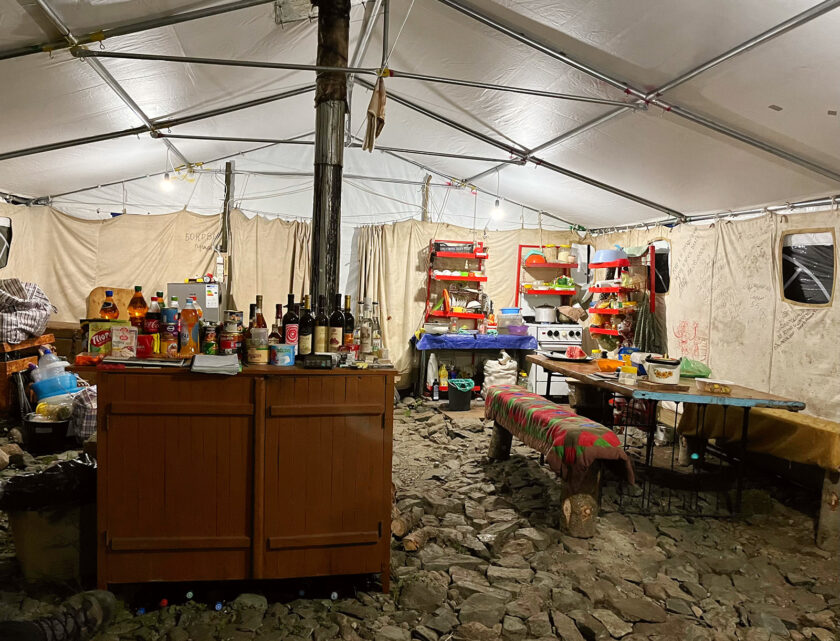
The communal tent at Basecamp Karakol compensated for the sleeping area. The interior was inscribed with heart-warming thank you notes from the hikers who had travelled through the camp over the years. Names and illustrations scrawled across the tent from China to Chile, and from Argentina to Australia brought a sense of connection to the outside world.
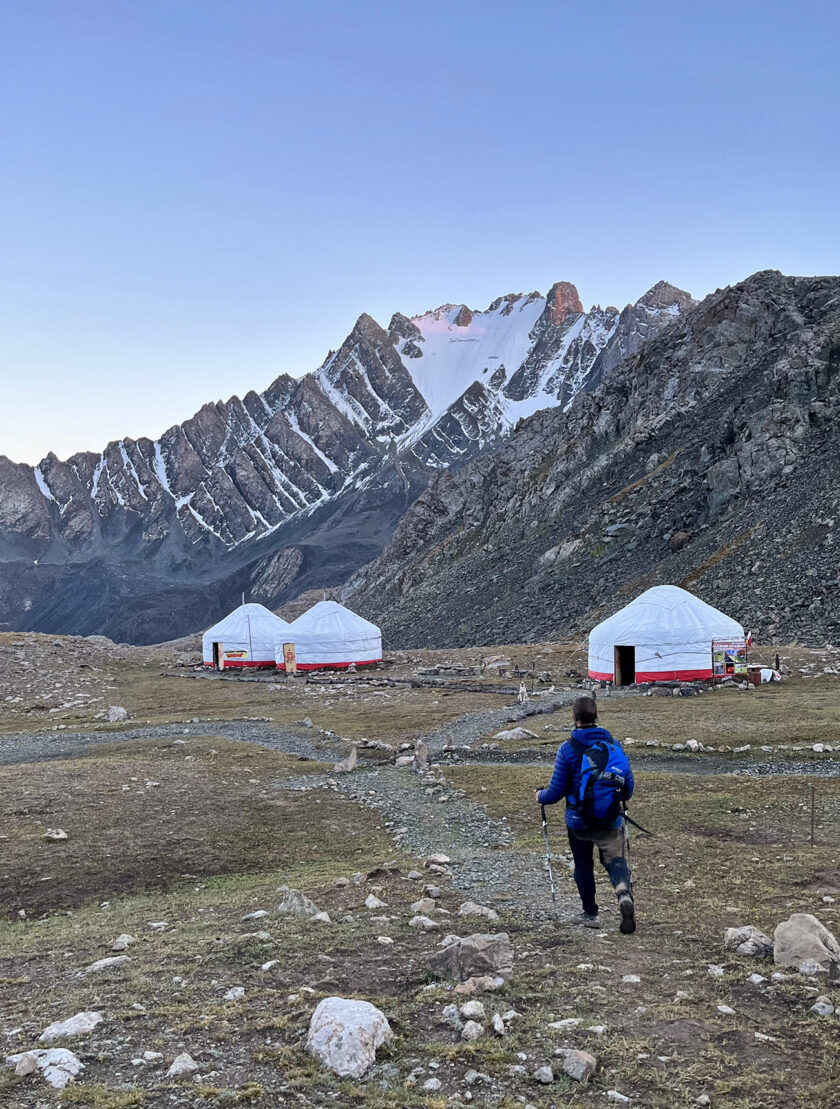
The hike was incredible. Without doubt, the best hike of my life, so the trade-off in sleep was without question, worth it. None of it would have been possible without sleeping in yurts along the way simply because brick and mortar accommodation on the trial isn’t an option. Whilst I was uncomfortable at the time, I look back at those nights in a yurt with warm affection now.
Would I recommend sleeping in a yurt?
Absolutely. Sleeping in a yurt not only enables you to travel in a way that follows the traditions and customs of the Kyrgyz, but it also allows you to experience pristine nature that otherwise wouldn’t be possible to experience.
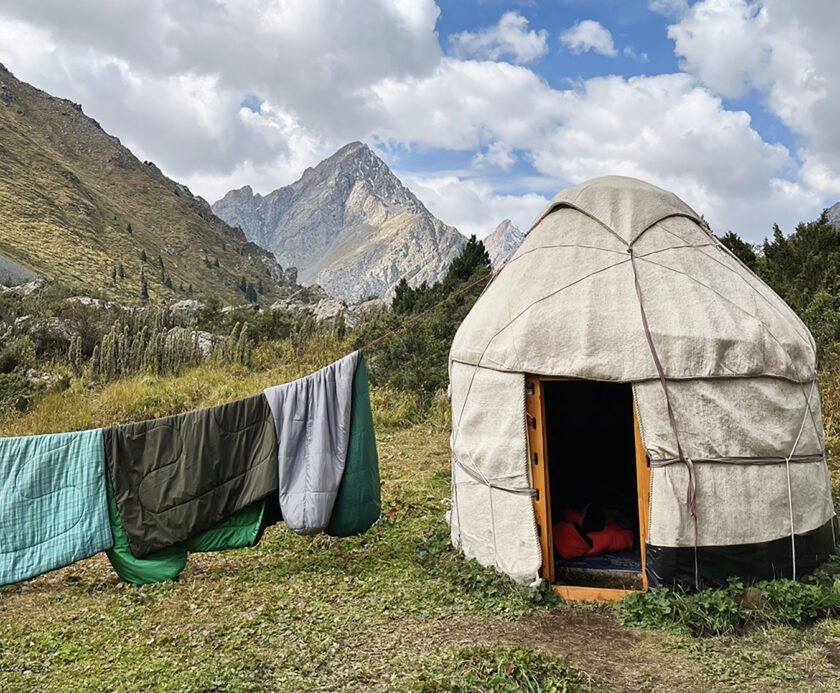
For anyone planning a trip to Kyrgyzstan, sleeping in a yurt should be experienced at least for a couple of days. Yurts offer an authentic way to travel away from the crowds.
All you need to do is look up at the sky at night. Once you’ve seen the clarity of the Milky Way shimmering across the sky like a classical dance performance, you won’t forget it. Experiences like this can’t be created from inside the walls of a hotel, no matter how many stars it has to its name.



